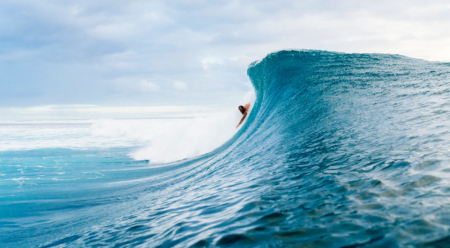Behind the Scenes of Keith Malloy’s “Fishpeople” Film
Filmmaking. Some people follow the storyboard, some follow their gut. Keith Malloy? Ten parts gut, zero parts plan. Well, I take that back. He’s got a plan, it’s just hard to discern it behind that beard. Fortunately, he’s got some friends (and a legendary wife) who know how to organize, use cameras, record sound, scuba dive and put out fires. It takes a village to create a piece of cinema worth remembering, and someone with gut instinct. Such is the case with Fishpeople, Keith’s latest film that just dropped on iTunes.
As the production photographer, the observations I took away from the experience extended far beyond capturing digital images. Here are a few impressions that I’ll remember for the rest of my days.

Keith Malloy on the set and at the helm of Fishpeople. Photo: Donnie Hedden
It all started in San Francisco on a cold, misty morning. We’re driving through low-income neighborhoods in a white van with Eddie Donnellan at the wheel and cameras in our hands. We’re here to pick up a rambunctious crew of kids to take them surfing. “Easy with the cameras boys,” Eddie mentions as we pull into a particularly gritty neighborhood. The relationship that Eddie shares with these Bay Area communities abolishes many of the social barriers that were inherited from our forefathers. He’s a bleeding heart, a nurturing father, a social worker and, most compelling, a man passing on the liberating experience of being in the ocean to kids who did not receive it as a child like he did.

Eddie Donnellan picks up Anthony for a day of surfing. San Francisco, California. Photo: Donnie Hedden
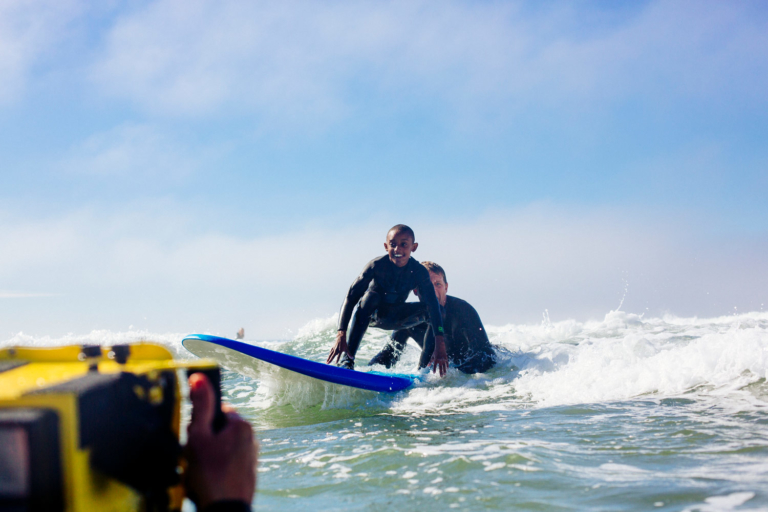
Eddie and Anthony share a wave at Ocean Beach. Photo: Donnie Hedden
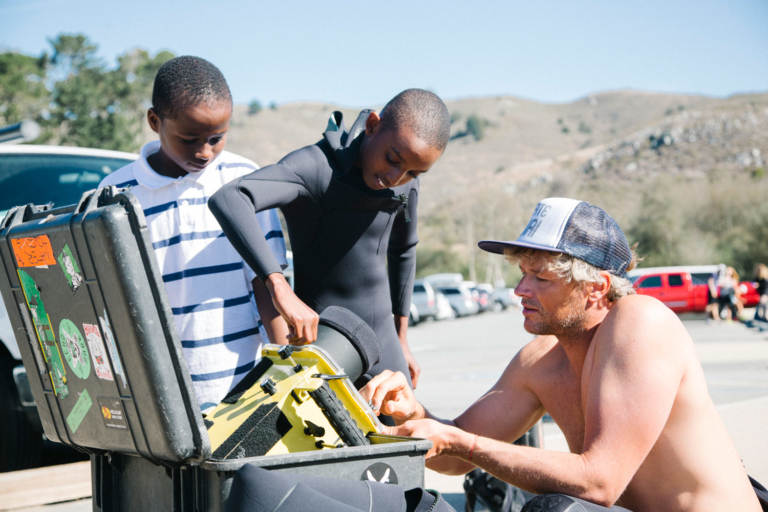
Scott Soens passes down some cinematic wisdom to the next generation. Photo: Donnie Hedden
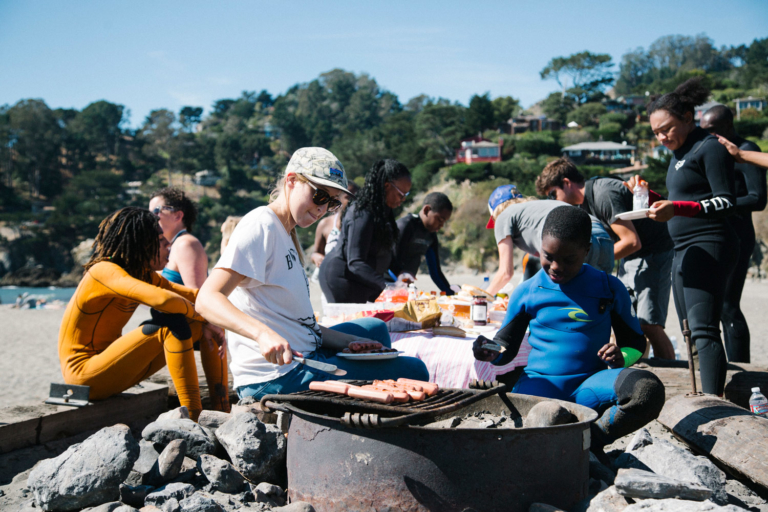
Our production team produces nourishment for a sea of hungry kids. Photo: Donnie Hedden
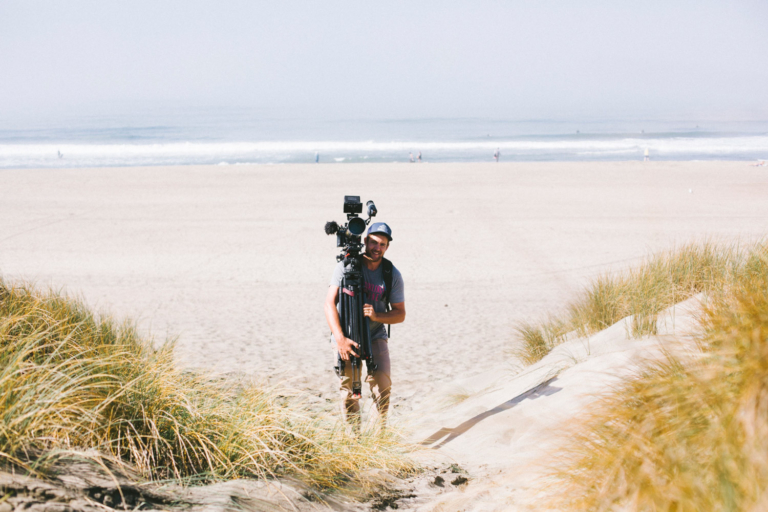
Andrew Schoneberger going the distance, not only in the field, but in the editing lab. Photo: Donnie Hedden
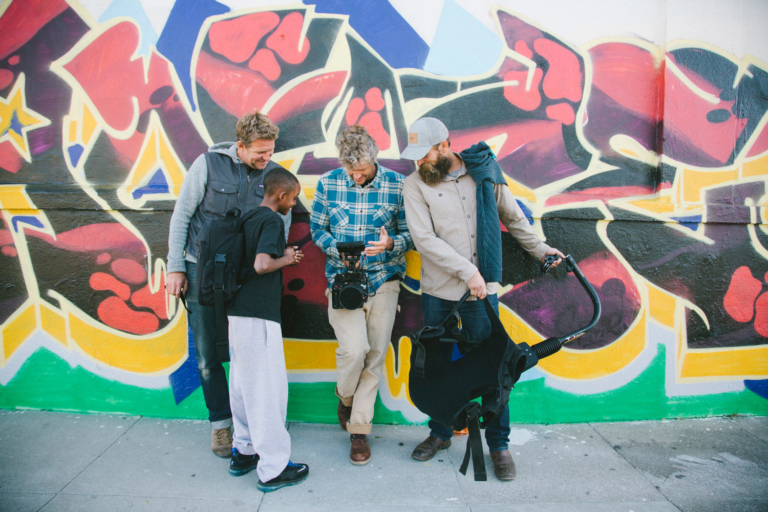
Eddie, Anthony, Scott and Keith review the footage—one of the first glimpses of what this film came to be. Photo: Donnie Hedden
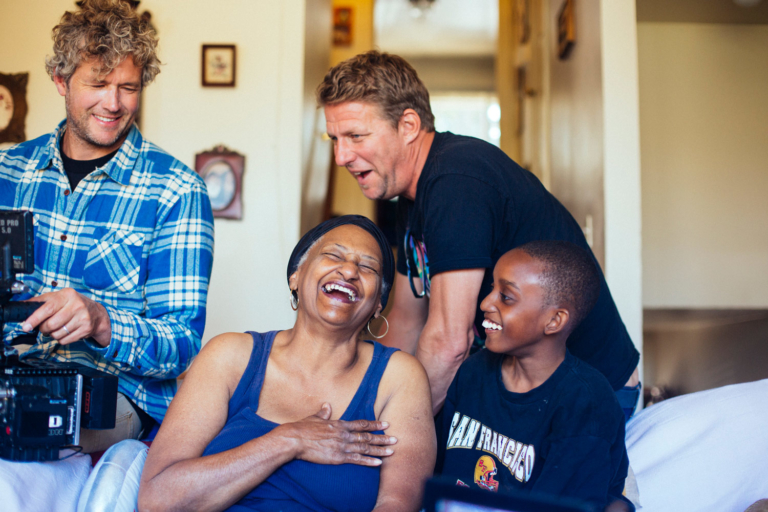
Showing the footage of Anthony surfing to his grandma, specifically the part where he goes airborne. Photo: Donnie Hedden
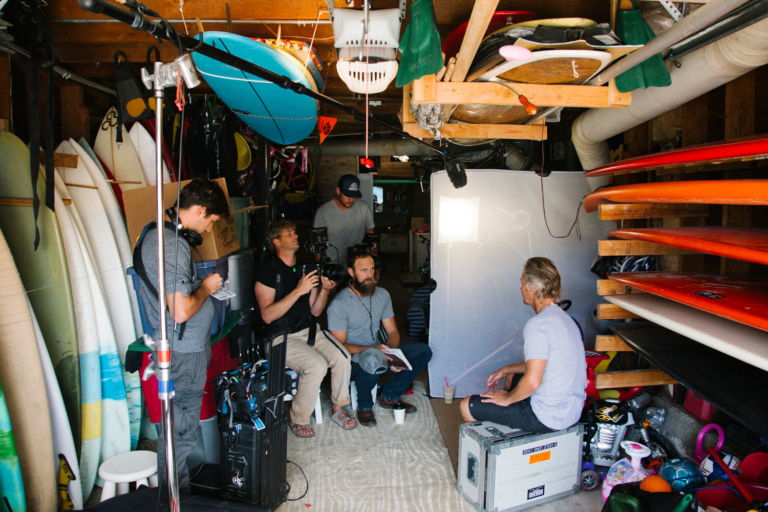
Intimate Outer Sunset interview situations. Photo: Donnie Hedden
Fast-forward to Long Beach, California. Monika (our producer) is trying to convince some L.A. County lifeguards to be a part of our film. Meanwhile, Mary Thoit, a 93-year-old woman, is swimming the bay with her mentee and Fishpeople character, Lynne Cox. If the qualities of the ocean were ever attributed to keeping us young, Mary would be a shining example. Mary reflects on Lynne’s accomplishments, specifically swimming the Bering Strait from Alaska to the USSR during the cold war. It was compelling to see her pay such tribute to Lynne’s determination to swim great lengths.
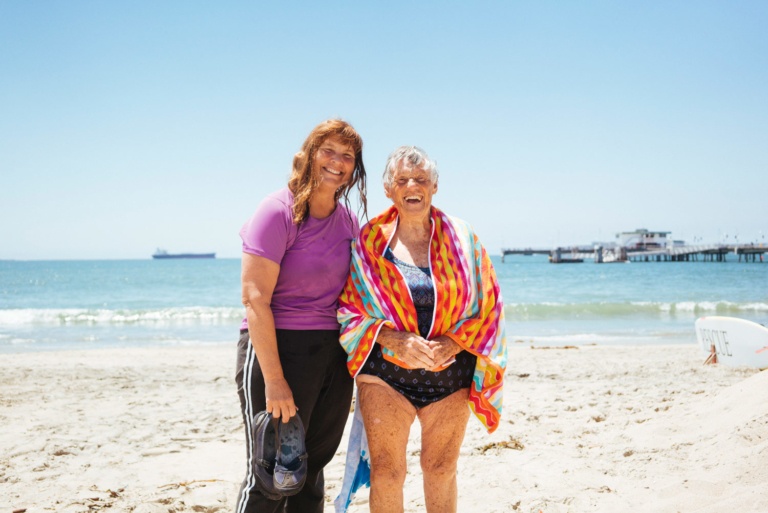
Fishpeople subject Lynne Cox and her mentor Mary Thoit in Long Beach after a swim. At 93 years old, Mary’s dramatically revolutionized my perception of healthy aging. Photo: Donnie Hedden
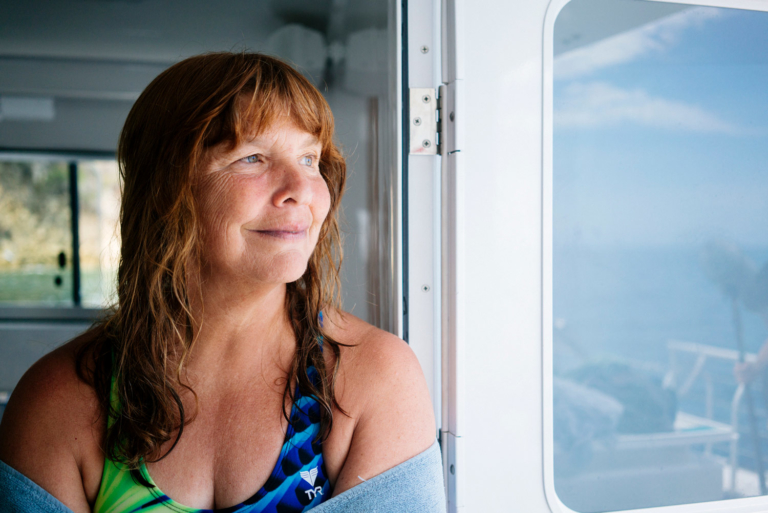
Lynne beaming after a swim at Catalina Island. Photo: Donnie Hedden
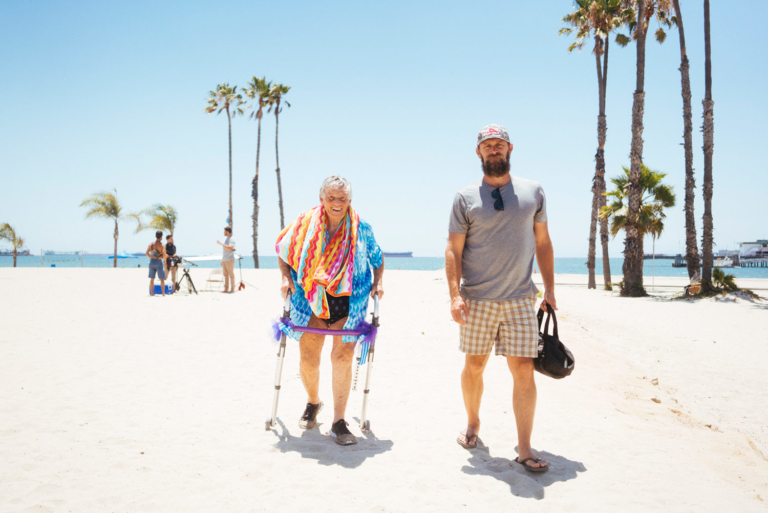
Keith, Mary and the crew in the background wrap up another day on set. Photo: Donnie Hedden
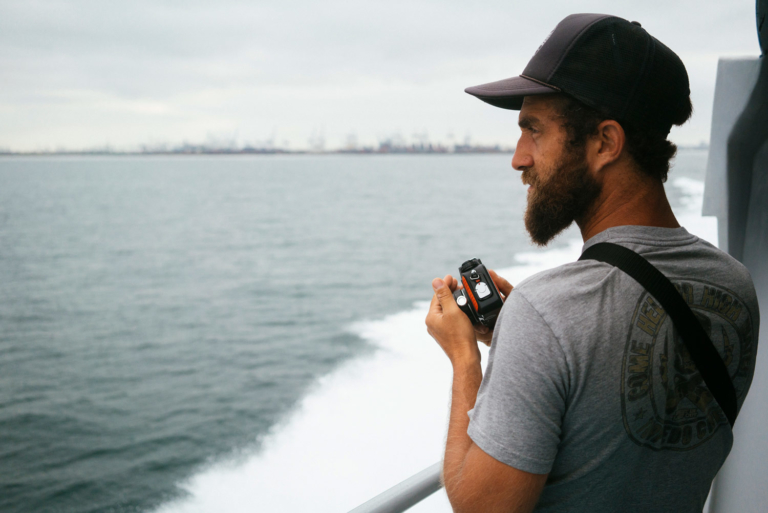
Erin Feinblatt is the man responsible for putting on the scuba tank and tracking Lynne on camera from below. Reliable and competent, he’s the kind of guy you want on a set. Photo: Donnie Hedden
Next scene: We’re approaching a tropical runway in a small plane that’s angled sideways to counter the winds. Looking around, I realize I am the only one concerned about the turbulence, a perfect foreshadow for our time with Kimi Werner—a huntress with a calmness that doesn’t flinch. You’ve probably seen her swim with sharks. Well, as stunning as that is, I believe her gratitude for the ocean and the people in her life surpasses any such radical feat. Three Hawaiian Islands later, we’re heading back to the mainland full of sashimi and Kimi’s story.
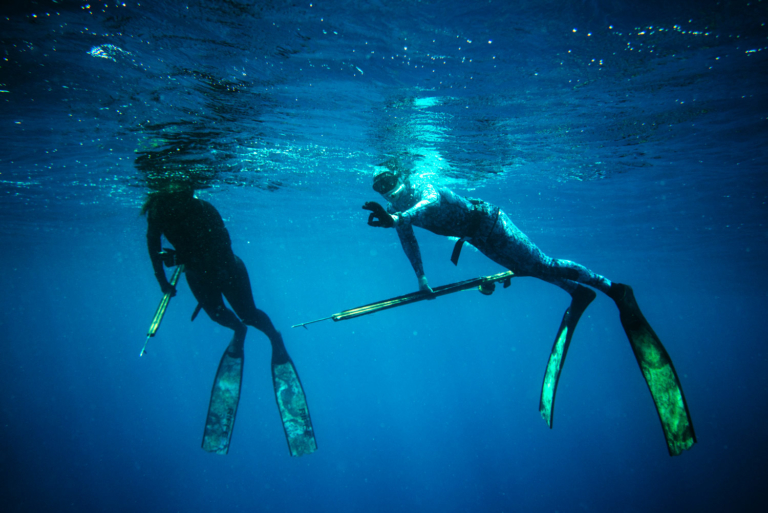
Kimi Werner and Mark Healey’s non-verbal communication is essential for sticking together while diving miles off the coast of Oʻahu. Photo: Donnie Hedden
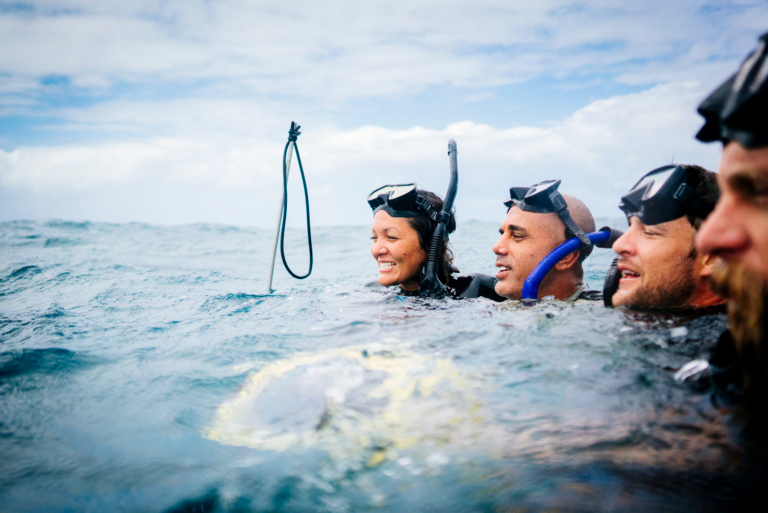
The floating Fishpeople fellowship. Photo: Donnie Hedden
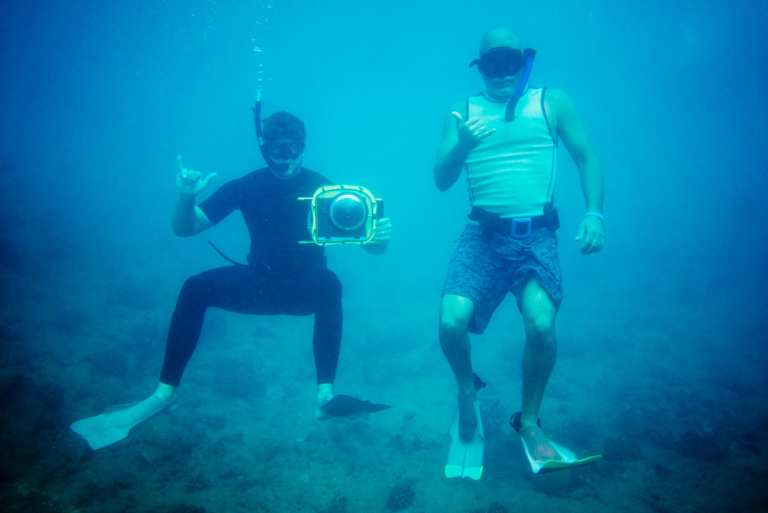
Andrew Schoneberger and Dave Homcy tag teaming the camera operation off the coast of Molokaʻi. Photo: Donnie Hedden
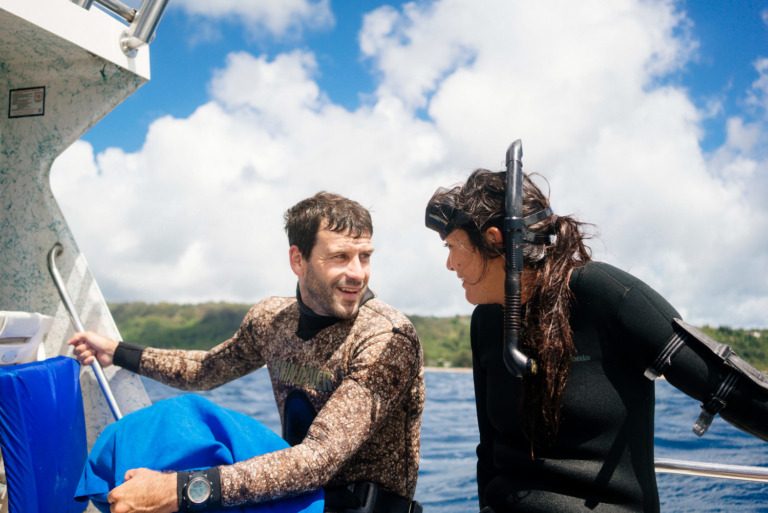
Justin Turkowski and Kimi Werner post-dive. Justin was the only one of the crew that could keep up with Kimi and her 100-foot dives. I’d hand him a camera and hope it’d survive the pressure at such depths. The footage Justin captured was priceless. Photo: Donnie Hedden
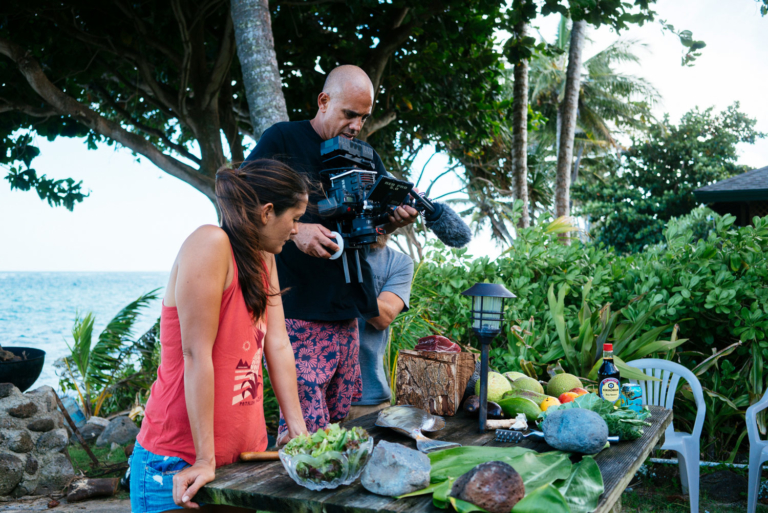
Kimi, Dave and Keith take a moment to appreciate the day’s catch. Photo: Donnie Hedden
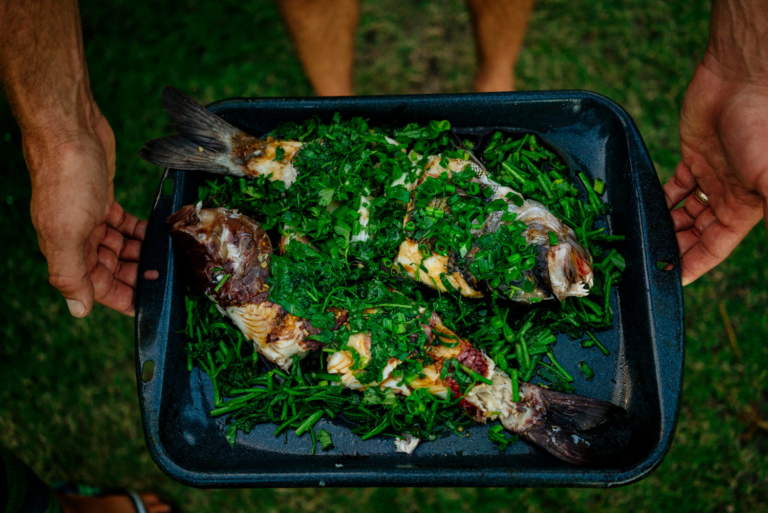
You can’t hang out with Kimi without experiencing a self-caught, homemade meal like this. If only photos could translate the aroma of this situation. Photo: Donnie Hedden
Dave Rastovich, a fixture of surfing inspiration in my life, buzzes by me in a sailing canoe on an open ocean Tasman Sea swell. In that moment, I realize that surfing is just a fraction of his waterman’s existence, and for that matter, his joy. This is quite contrary to what the surf industry told me about Dave growing up. And so goes the story of Dave as featured in Fishpeople—an amphibian of many natural talents.
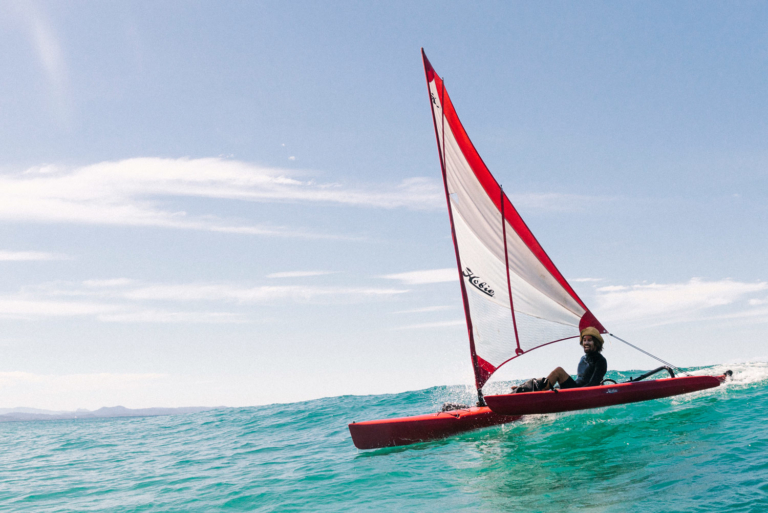
Dave Rastovich flying across open ocean swells. The only one out with infinite swell on the horizon, you couldn’t wipe the smile off his face if you tried. Photo: Donnie Hedden
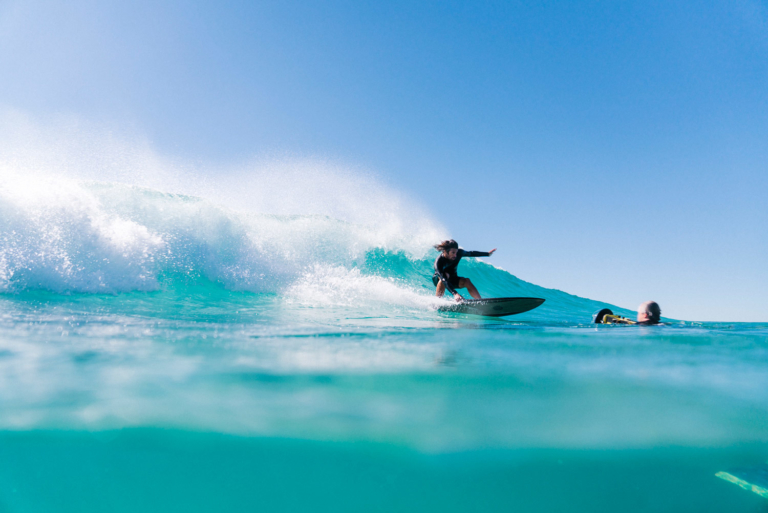
Dave Rastovich and Scott Soens making movie magic. Photo: Donnie Hedden
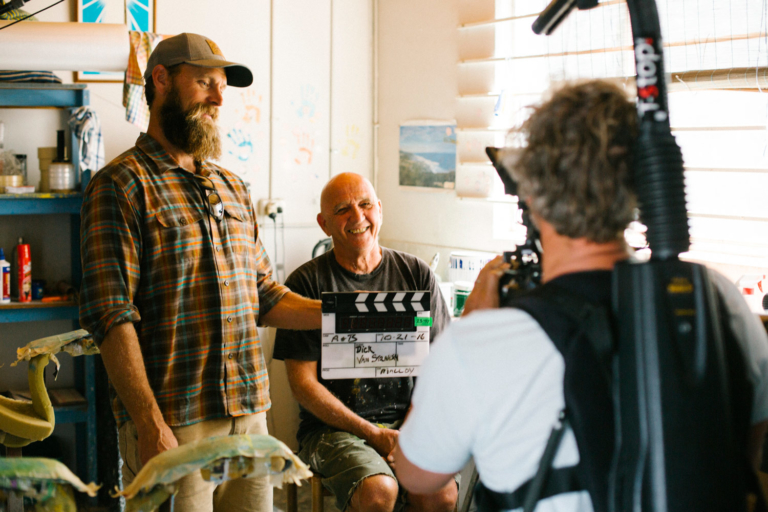
Surfboard shaper Dick Van Straalen giving us the dirt on Rastovich. Photo: Donnie Hedden
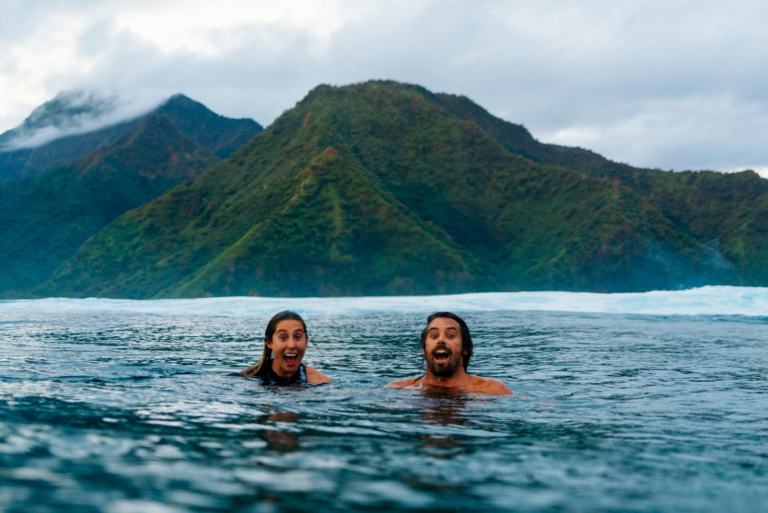
Dave and his partner Lauren Hill, a writer and activist. This was her first time surfing Teahupoʻo. She was charging! Photo: Donnie Hedden
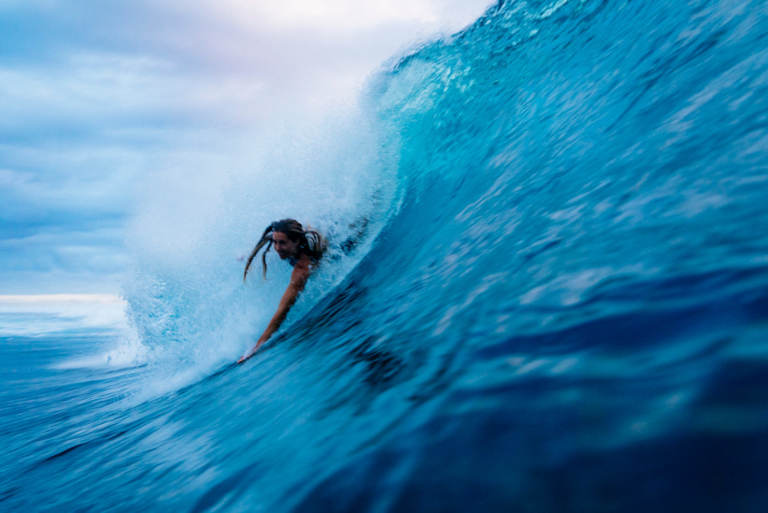
I told you she was charging! Lauren Hill, Tahiti. Photo: Donnie Hedden
We’re hopping in the car to leave for the next round of shooting when Ray Collins comes out of his house saying, “Mate, you’re going to need this for those clear waters of Tahiti.” He hands me an underwater dome port for my camera. This is not a gift to give away like a party favor. This is a profound gesture that is representative of Ray’s unbridled spontaneity to engage in newfound community, strangers at the coffee shop and, in the case of Fishpeople, swimming amid unique and powerful waves—peering into their faces through the lens of his camera. The poster photo for this film was made possible by the underwater port Ray gifted me.
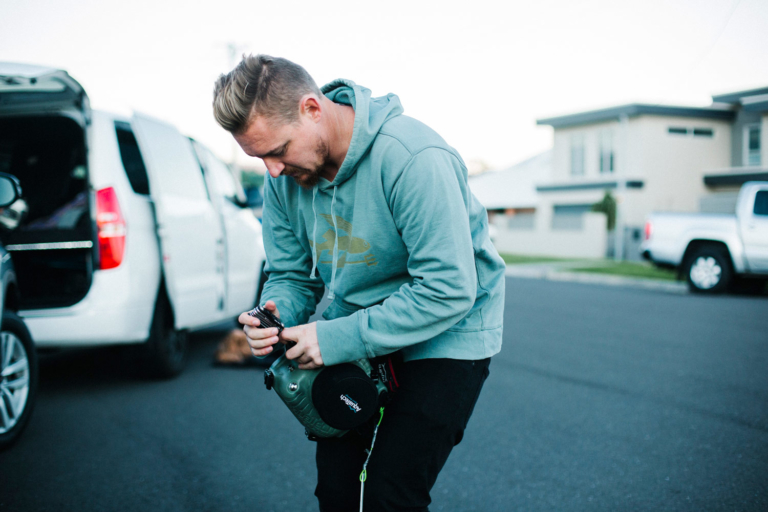
Ray Collins battens down the hatches on his camera system. The seas he swims are certainly not the friendliest I’ve seen. Photo: Donnie Hedden
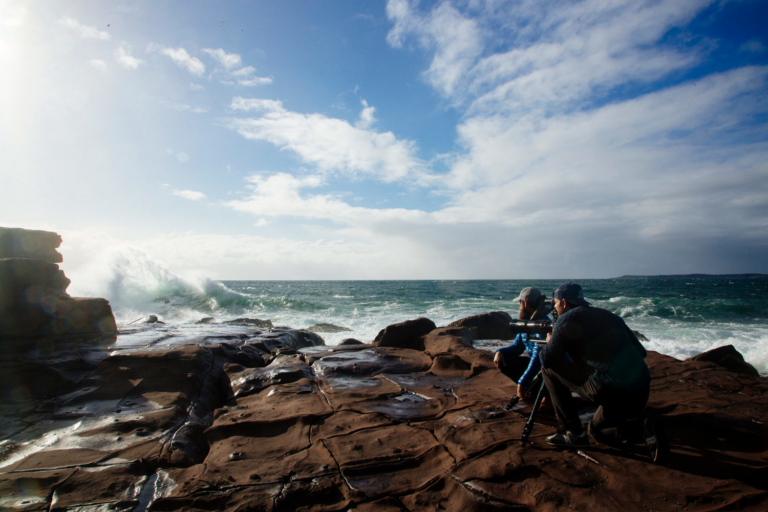
Keith and Andrew capture Ray navigating the rowdy convergence of water and rocks on the coast of Australia. Photo: Donnie Hedden

Scott Soens and David Fox wait their turn to jump in. We were only in town for three days to shoot with Ray and the swell of the year hit. With no one getting hurt, it couldn’t have gone any better. Photo: Donnie Hedden
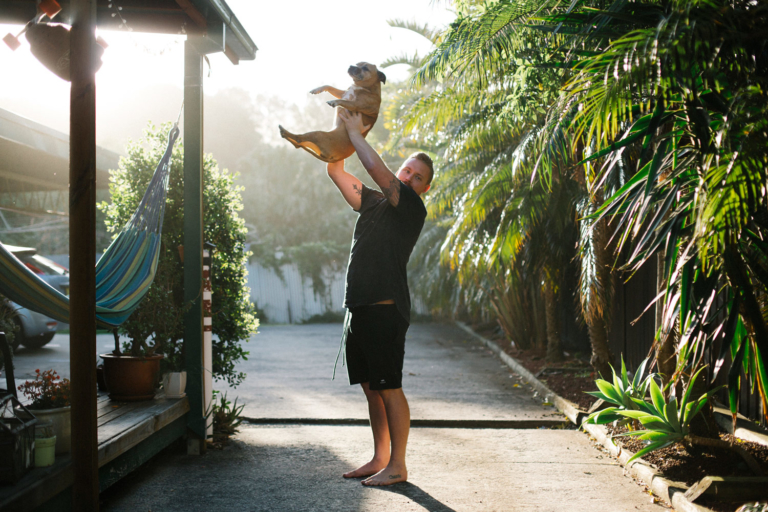
Ray and his celebrated canine companion. Photo: Donnie Hedden
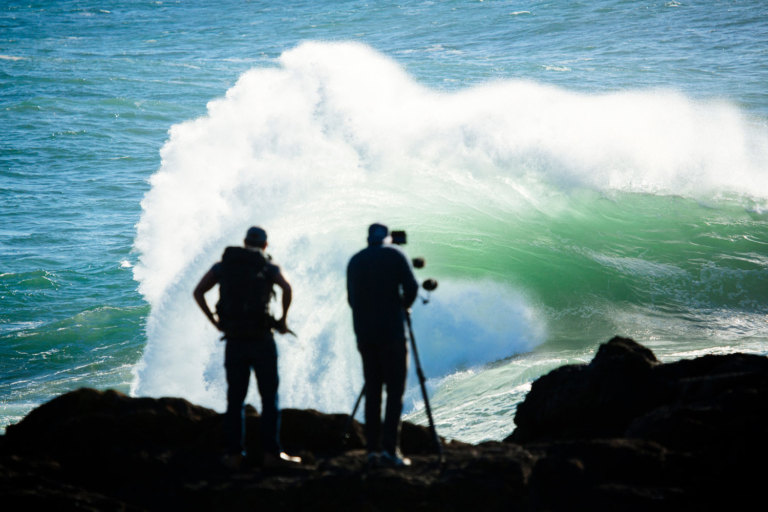
Keith and Andrew staking out front row seats. Photo: Donnie Hedden
I’m watching a herd of white Arabian horses running through a steep Tahitian valley. Those deep green valleys you see from the lineup of Teahupoʻo are so dramatic they look as if they’ll topple over. Fishpeople character and professional surfer Matahi Drollet brought us up here. It’s his uncle’s property. An elder of the community with deep Tahitian roots, Peva Levy’s hospitality extends into telling the vivid story of his homeland and the early origins of surfing Teahupo’o which was supposedly first ridden by a woman. It is through these moments with his family that the inherited reverence (and confidence) Matahi has for the ocean is founded.
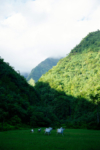
The scene out of a dream. A group of horses play in the valley bottoms of Tahiti. Photo: Donnie Hedden
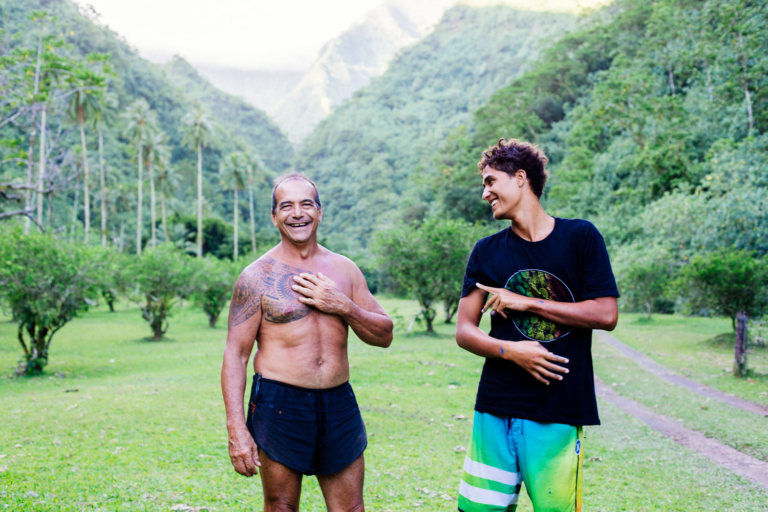
Matahi Drollet and his uncle Peva Levy share their different sides of the story of growing up in Tahiti. Photo: Donnie Hedden
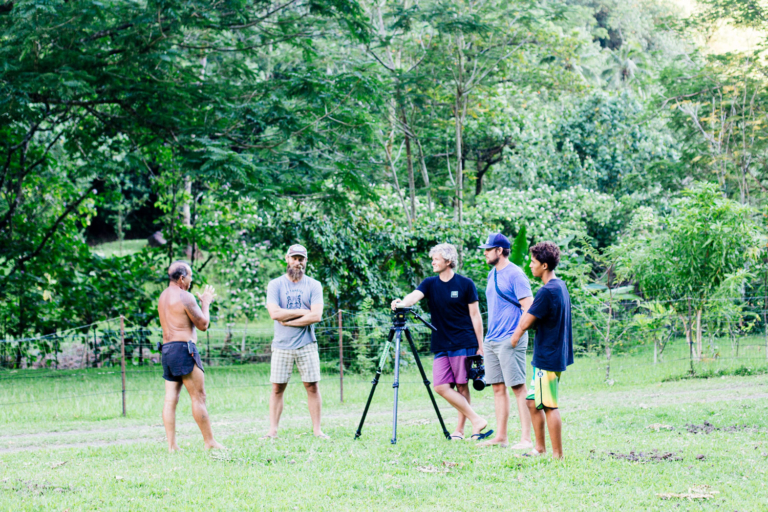
Way back in the valley, the cameras power down but the stories roll on. Photo: Donnie Hedden
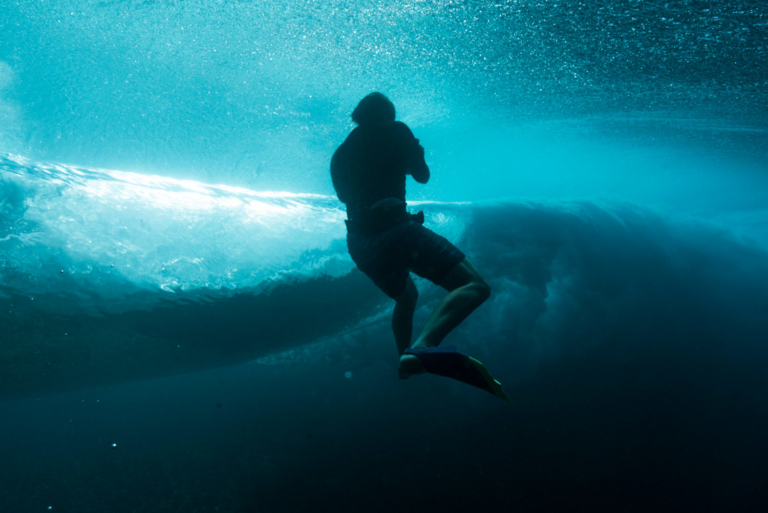
Scott Soens captures an underwater drive-by at Teahupoʻo. Photo: Donnie Hedden

Looking back on the valleys filled with white horses and tales of early Tahiti. Photo: Donnie Hedden
A foreigner with a camera is a liability for sacred communities. Traditions, landmarks and relationships can easily be exploited. Keith’s career of traveling and storytelling has equipped him with the sensitivity to avoid such exploitation. Or maybe it’s always been a resource of that gut instinct. The folks that lent a lens and a hand to the making of this film set the bar high. They treaded lightly, preserved integrity and shared their wisdom with me—not the average qualities of a film production. The crew—Scott Soens, Monika McClure, Andrew Schoneberger, Dave Homcy, Emily Grant, Erin Feinblatt, Peter Beer and more—all these individuals, who vary in personality, made possible the climate for the creation of this hearty piece of cinema, this proper dose of inspiration.
FISHPEOPLE
A film about lives transformed by the sea.
